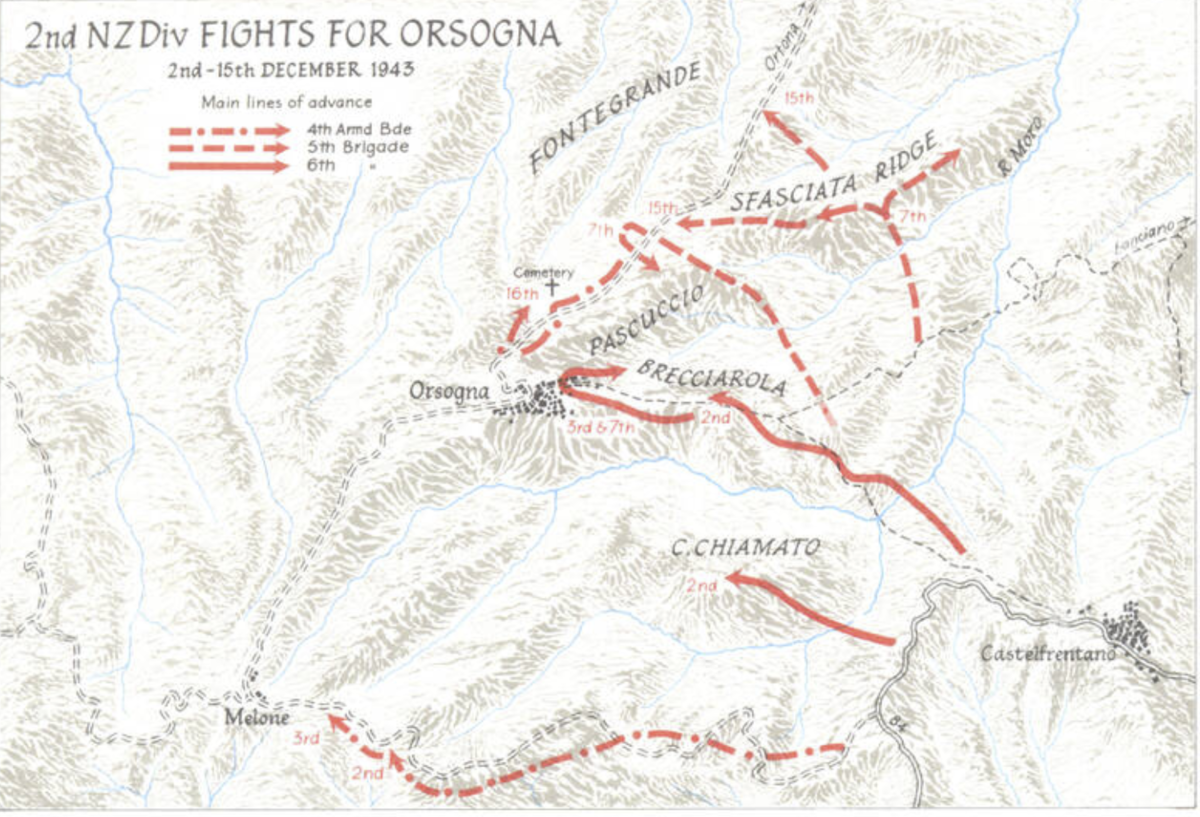The Battle of Orsogna: New Zealand’s Role in the Italian Campaign
The Battle of Orsogna, fought between 2 and 24 December 1943, was a significant engagement for the New Zealand forces during the Italian Campaign of World War II. As part of the Allied efforts to breach the German defensive lines in Italy, the New Zealand 2nd Division played a crucial role in attempting to capture the strategically important town of Orsogna.
Introduction
In late November 1943, following successful operations along the Sangro River, the New Zealand 2nd Division advanced towards Orsogna. The town’s elevated position on a ridge made it a formidable defensive point for the German 10th Army, which was determined to hold the line and prevent Allied forces from advancing further north.
Itinerary of the Battle
1.Initial Assault (2-3 December 1943):
•The New Zealand 2nd Division launched an attack on Orsogna, expecting minimal resistance. However, the Germans had fortified the town, leading to fierce fighting. The New Zealanders managed to enter parts of Orsogna but were eventually repelled by strong counterattacks.
2.Operation Torso (7 December 1943):
•A renewed offensive aimed to capture Orsogna involved coordinated attacks by the 23rd, 24th, and 28th (Māori) Battalions, supported by armored units. Despite initial gains, including the capture of the cemetery area by the Māori Battalion, the operation did not achieve its objective due to staunch German defense and adverse weather conditions.
3.Subsequent Engagements (8-24 December 1943):
•The New Zealand forces continued to engage in skirmishes and probing attacks around Orsogna, attempting to weaken the German positions. However, the challenging terrain, well-entrenched defenders, and deteriorating weather hindered significant progress.
Key Points of the Battle
•Strategic Importance of Orsogna:
•Orsogna’s location provided the Germans with a vantage point to observe and control movements in the surrounding valleys, making it a critical point in the Gustav Line defenses.
•Role of the 28th (Māori) Battalion:
•The Māori Battalion displayed exceptional bravery, particularly during Operation Torso, where they captured key positions despite facing fierce resistance. Their actions are commemorated for their courage and determination.
•Challenges Faced by New Zealand Forces:
•The battle highlighted the difficulties of mountain warfare, including navigating steep, rugged terrain and conducting operations under adverse weather conditions, which impacted mobility and supply lines.
•German Defensive Tactics:
•The German forces effectively utilized the natural defensive advantages of Orsogna’s terrain, constructing strong fortifications and employing counterattacks that thwarted multiple Allied assaults.
Conclusion
The Battle of Orsogna exemplifies the resilience and determination of the New Zealand forces during the Italian Campaign. Despite not achieving a decisive breakthrough, their persistent efforts contributed to the overall pressure on German defenses, paving the way for future Allied advances in Italy. The engagement remains a significant chapter in New Zealand’s military history, reflecting the challenges and complexities of the Italian front during World War II.
